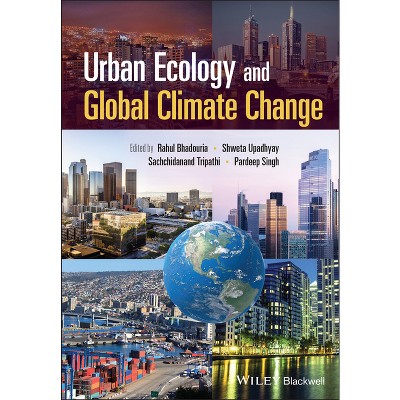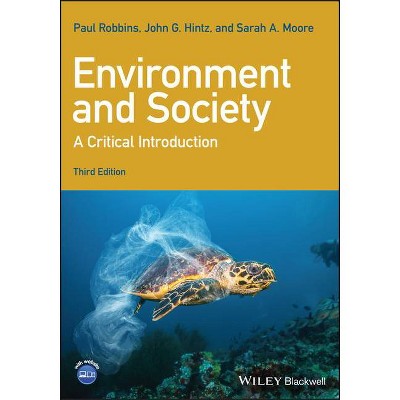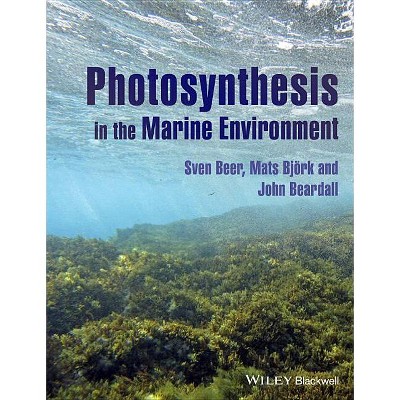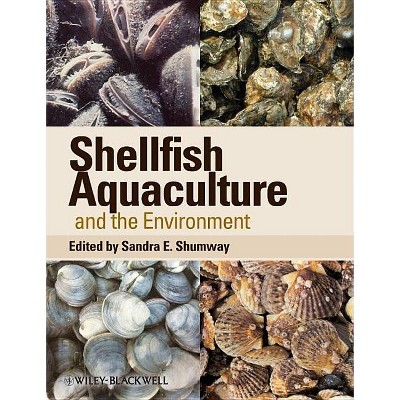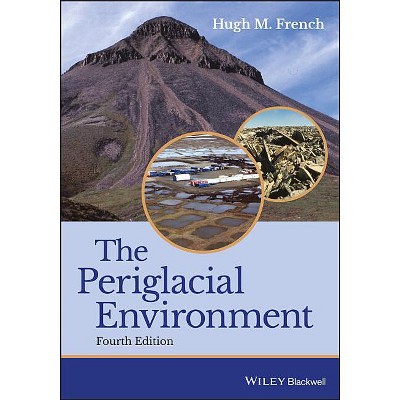Plastic and Microplastic in the Environment - by Arif Ahamad & Pardeep Singh & Dhanesh Tiwary (Hardcover)

About this item
Highlights
- ORGANIC REACTIONS Thought-provoking discussions of the challenges posed by--and potential solutions to--plastic and microplastic pollution In Plastic and Microplastic in the Environment: Management and Health Risks, a team of distinguished environmental researchers delivers an up-to-date exploration of plastic and microplastic environmental contamination, conventional and advanced plastics management techniques, and the policies adopted across the globe to combat the phenomenon of plastics contamination.
- About the Author: Arif Ahamad, PhD, is Assistant Professor in the Department of Environmental Science, Daulat Ram College, University of Delhi, New Delhi, India.
- 320 Pages
- Political Science, Public Policy
Description
About the Book
"In recent years, microplastics (MPs) have received special attention from the mass media and scientific community. MPs are ubiquitously found all over the world, from overpopulated to remote regions. Until now, studies on MPs is mainly focused on marine environments. Freshwater environments are reported as the main sources of MPs to the oceans, however, knowledge of MPs in the environments is insufficient. This chapter reviewed the potential sources and pathways of MPs in freshwater environments. A summary of the analytical methods for sample collection, preparation, and analysis of MPs was also presented. Furthermore, the global distribution of MPs in river and lake systems was also reported. This review showed that MPs have been found ubiquitously in freshwater environments from remote to densely populated areas. The MPs pollution in China was reported higher than in other parts of the world. The main pathways of MPs into freshwater environments include effluents of wastewater treatment plants (WWTPs), and solid waste collection, processing, and land-filling. For the sampling of water samples, plankton nets or manta trawls with an aperture size of 333 m are used in most studies. For the sampling of river bottom sediments, most studies employed grab samplers, while grab or corers were used for lake sediment. The extraction of MPs from sample matrices was conducted mainly with saturated sodium chloride as it is inexpensive and environmentally friendly. The visual sorting of MPs is conducted mainly by dissection microscope, however, this is a time-consuming process and can create miss-identification or underestimation of MPs. The polymer types of MPs are commonly identified by Fourier transform infrared (FTIR) spectroscopy. Since different methods are used for collecting and analysis of MPs by different researchers, it hampers consistency and comparison between studies. Thus, the development of standard methods should be one of the top priorities for further studies on MPs"--Book Synopsis
ORGANIC REACTIONSThought-provoking discussions of the challenges posed by--and potential solutions to--plastic and microplastic pollution
In Plastic and Microplastic in the Environment: Management and Health Risks, a team of distinguished environmental researchers delivers an up-to-date exploration of plastic and microplastic environmental contamination, conventional and advanced plastics management techniques, and the policies adopted across the globe to combat the phenomenon of plastics contamination.
Containing a balanced focus on both conventional plastics and microplastics, this book discusses the potential health issues related to plastic and microplastic infiltration in a variety of global environments and environmental media, including freshwater environments, oceanic environments, soil and sediment, and air. Insightful treatments of commercial and social issues, including the roles of corporate social responsibility initiatives and general education in the fight against plastic and microplastic pollution, are provided as well.
Plastic and Microplastic in the Environment also includes:
- A thorough introduction to plastic debris in global environments, including its accumulation and disintegration
- Comprehensive explorations of policies for strengthening recyclable markets around the world
- Practical discussions of the prevalence of microplastics in the marine environment, air, soil, and other environmental media
- In-depth examinations of wastewater treatment plants as a potential source point of microplastics, as well as conventional and advanced microplastic particle removal technologies
Perfect for academics, postgraduates and advanced undergraduates in fields related to environmental science and plastics, Plastic and Microplastic in the Environment: Management and Health Risks will also earn a place in the libraries of professionals working in the plastics industries and environmental policymakers.
From the Back Cover
Thought-provoking discussions of the challenges posed by--and potential solutions to--plastic and microplastic pollution
In Plastic and Microplastic in the Environment: Management and Health Risks, a team of distinguished environmental researchers delivers an up-to-date exploration of plastic and microplastic environmental contamination, conventional and advanced plastics management techniques, and the policies adopted across the globe to combat the phenomenon of plastics contamination.
Containing a balanced focus on both conventional plastics and microplastics, this book discusses the potential health issues related to plastic and microplastic infiltration in a variety of global environments and environmental media, including freshwater environments, oceanic environments, soil and sediment, and air. Insightful treatments of commercial and social issues, including the roles of corporate social responsibility initiatives and general education in the fight against plastic and microplastic pollution, are provided as well.
Plastic and Microplastic in the Environment also includes:
- A thorough introduction to plastic debris in global environments, including its accumulation and disintegration
- Comprehensive explorations of policies for strengthening recyclable markets around the world
- Practical discussions of the prevalence of microplastics in the marine environment, air, soil, and other environmental media
- In-depth examinations of wastewater treatment plants as a potential source point of microplastics, as well as conventional and advanced microplastic particle removal technologies
Perfect for academics, postgraduates and advanced undergraduates in fields related to environmental science and plastics, Plastic and Microplastic in the Environment: Management and Health Risks will also earn a place in the libraries of professionals working in the plastics industries and environmental policymakers.
About the Author
Arif Ahamad, PhD, is Assistant Professor in the Department of Environmental Science, Daulat Ram College, University of Delhi, New Delhi, India.
Pardeep Singh, PhD, is Assistant Professor in the Department of Environmental Science, PGDAV College, University of Delhi, New Delhi, India.
Dhanesh Tiwary, PhD, is Professor and Head of the Chemistry Department at the Indian Institute of Technology, Banaras Hindu University, Varanasi, India.
Shipping details
Return details
Trending Non-Fiction






